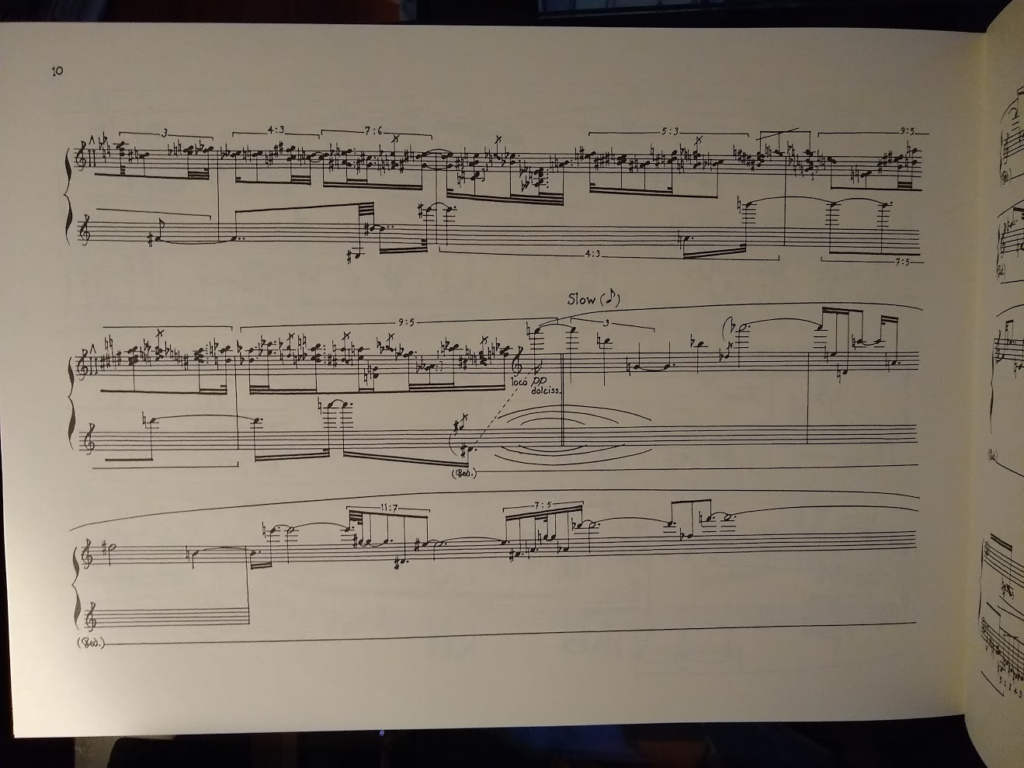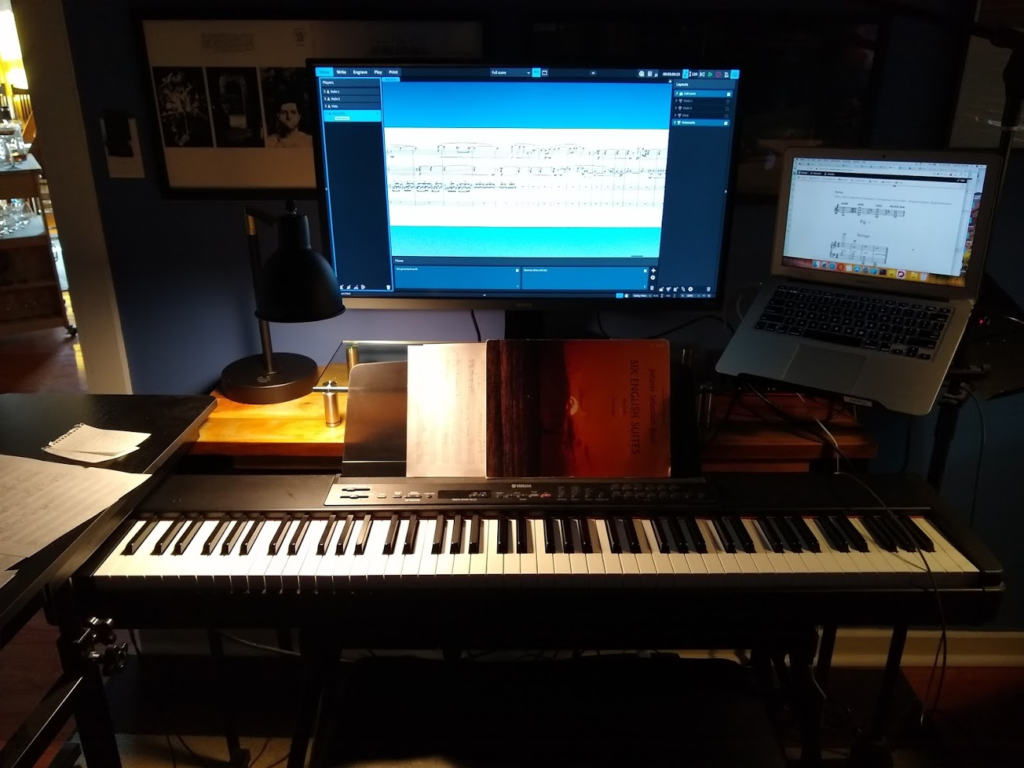The value in writing a complex rhythm such as, say, a dotted quarter followed by a dotted eighth followed by a dotted sixteenth, is not for the exactitude of the performance but for the communication to the performer that these are all notes of diminished length that should feel like dotted notes. That is: notes that have not-quite-finished and are expecting another note to rhythmically appear just before the end of their time.
I just finished a section whose lines were influenced by the long, solo, tonal melodies of Finnissy. It’s a mood I’ve felt and tried to express in different styles (cf. Oscillations from The Silent Spectrum) and their effectiveness is because of their proximity to a contrast; rhythmic to arrhythmic. This is basic stuff but then the implementation is often more interesting than the concept.

So I had my moment of adopting that and “making it my own” and although it was already “my own” from previous works, I stole a bit of the arrhythmic aspect from Finnissy. Arrhythmic, but still within a rhythmic framework like those piled up dotted notes: you need to know what specific rhythms feel like to express what fragments of them feel like.
I watched a string quartet competition today (Premolo Paolo Borciani, the Chaos Quartet performed a new work by Toshio Hosokawa and the Debussy quartet) and came away with several notes on composition techniques that might work within the second movement. I have reticence listening too much when I’m composing (am I becoming a mimic?) but there’re always techniques to examine and re-examine and stealing is to approach greatness as they say.
Writing my symphony, I sat at the keyboard and used MuseScore on a MacBook Air. Yes, with a 13-inch screen. Yes, writing for full orchestra. It was stupid. So I just upgraded with an external monitor (nice, not huge) on a table with a desk lamp, and a side table for scores. It’s less-than-perfect but much greater than imperfect and yes it’s odd that it took me moving from 20 or so staves to 4 to upgrade but there you have it.
